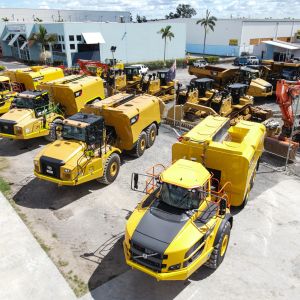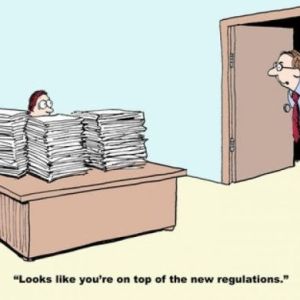Here’s a tip for anyone selling anything: you need to understand features and benefits. Whilst features are all well and good (fastest, most compact, prettiest or whatever), it is actually the benefits that the customer pays attention to. So what if it is the fastest?
The benefit is that it allows you to do more in less time, which in turn means it saves you more money. In a nut shell, nearly all selling (particularly in tight economic times) comes down to SAVING YOU MONEY.
Our businesses all operate on the philosophy of providing excellent value for money. We are an affordable alternative to most other players in the market, and our customers realise that we may not be the cheapest, but they get the best savings over the operational life of their Asset. I’ll give some examples shortly.
Tip number two if you ever want to sell to me (or anyone with their own cash on the line): the worst sales pitch you can use is to make your main selling point “Compliance”. There is (sometimes) a requirement for compliance, but what you are telling your customer is that your product or service has next to no value in what it actually does or achieves – ticking some bureaucratic boxes is actually non-productive, and therefore a waste of money.
Just for the sake of clarity: some people have started using “Compliance” as an interchangeable term for “Safety”. Our business sells a number of products that greatly improve safety, for instance our Quick Hitches, Hand rails, burst protection valves and so forth. However, the main reason we supply these products is that it provides benefits that add value to our customer. Yes, the products comply, but compliance is not the reason for them being a part of our customer offering or indeed why we sell them. It’s a very important difference.
What does Compliance cost you?
A valued customer of ours recently submitted a tender for some work. Well, actually lots of our customers do (and you are all valued!), but that’s not my point. He sat down and worked out that one third, yes 1/3, of his total costs were related to Compliance. Why would this matter when all the other contractors quoting on the same job face the same hurdles? Because if the price was 1/3 lower, we’d see a lot more than 1/3 more projects go ahead as they become more viable for the person paying for it.
As an example, Anglo American announced this week that it is cutting its international workforce by 53,000 (co-incidentally 1/3… – from 151,000 to 98,000, after already cutting 10,000 recently). Falling commodity prices are of course partly to blame. When the company lost $AUD4.1 billion in the last six months, my fear is that a disproportionate number of these jobs will disappear in Qld’s 6 sites or NSW’s 1 site, because Anglo are rightly looking at the comparative costs of different production facilities. Every job site in Australia (not just Anglo ones) is competing in a global marketplace, something we often forget when we benchmark mostly against domestic competitors. As Anglo’s CEO Mark Cutifani says: “If you don’t touch product, you are an overhead”.
By co-incidence whilst writing this article, I was contacted by an electrical contractor selling a compliance product (Test & Tag). Their largest customer (a manufacturer) is in a spot of financial bother, and had just decided to stop testing their electrical leads. 8,000 leads, twice a year – about $80,000. I’m presuming that they’ve assessed the risks before they made the decision, and maybe asked questions like why they need to test if they have RCD’s, or why electrical goods that don’t get tested before they are sold are still compliant, or why a microwave oven or computer needs to be tested in a workplace but not in a home. The fact is when their back is against the wall, they have had to look at costs. They’ve found a way of managing the risks with better cost benefit than “compliance testing” gives them. As a sign of the times, the electricians doing this work have had to drop their charge out rates to $70 per hour – a far cry from what it was not long ago. As I always say: a huge percentage profit on a zero sale is still zero…
Importance of After sales Support
Which brings me back to one way that our company provides you with solutions that save you money. Take for instance our Rock Breaker business. We have been reliably supplying the Everdigm/Rhino brand for over a decade, and are still amazed at the number of people who go out and buy a new brand to the market “because it’s cheap”, or a fan dangled brand “because it’s a well recognised brand”. Some even buy shiny units at auctions that don’t even have an Australian dealer. The gloss usually wears off quickly, and then they come back to us after their purchase with regrets.
Why? Well:
- It’s no good having any of the above brands if there are no spare parts in the country to fix it when it breaks down. What is your downtime costing you?
- Does the Rock Breaker you purchased require specialised tooling to service it? If so, can you do it yourself, or are you locked in to going back to the importer, even for a service?
- They didn’t check on the cost of consumables before they went ahead, and didn’t check if they were stocked or only available as special order (read: you pay for air freight).
If we decide to represent a product, even if it is a new product, we carry a full range of spares. Whether you need the parts or not, should you have an issue your downtime is reduced, saving you money.
By listening to potential customers frustrations, over time we’ve also learned what breaks on competitor models. As their products age, this has allowed us to source parts for them so at least eventually you have access to affordable parts. These are just some of the ways that RD Williams can save you money.
Qld Rock Breakers has now been Number 1 in the Qld market for a number of years for a reason. We provide a quality Korean Rock Breaker at value for money prices that we support so you are not left in the lurch. Our customer base includes hundreds of earth moving businesses, with the product also accepted by many major OEM machinery suppliers and customers such as Thiess and Rio Tinto.
Before your competitive advantage disappears – change!
We all know China as the world’s largest producer of anything and everything. Some people even know them to be the most competitive manufacturers (as measured by the 2013 Global Manufacturing Competitiveness Index), but most people also think this has to do with the cost of labour. This used to be true, however from 2000 to 2013, the average real wage in China grew at an annualised rate of 11.4%. Remember, that is compounding. In 2000, Chinese wages were only 1/3 of their counterparts in Mexico, now they are 50.3% HIGHER. So China is no longer cheap, but still competitive against other low labour cost countries like Vietnam or Cambodia. How?
One reason is that China has realised that the bitter taste of a poor product lasts much longer than the sweet taste of a cheap price. To counteract the rising labour costs, between 2008 and 2013 China increased their use of industrial robots by 36% per year every year (there’s that compounding thing again…), whilst the average in the rest of the world was 9.5%. China now makes 20% of the worlds robots. Quite staggering really, when you realise that the objective of Communism is to keep full employment, thereby putting many people into menial employment. The main reason for the investment is surprisingly not cost related: the labour force is shrinking and the younger generation is not hard working enough, whilst also demanding better conditions and more flexible hours. These demands are fair as a country develops, but watch out for the “Compliance” sales pitch trap: if you are not adding value, you’re expendable…
As always, onwards and upwards!
Fred Carlsson
General Manager




